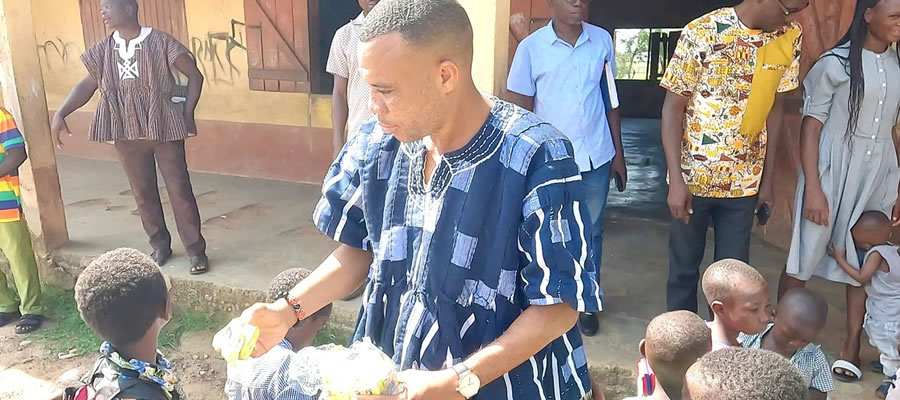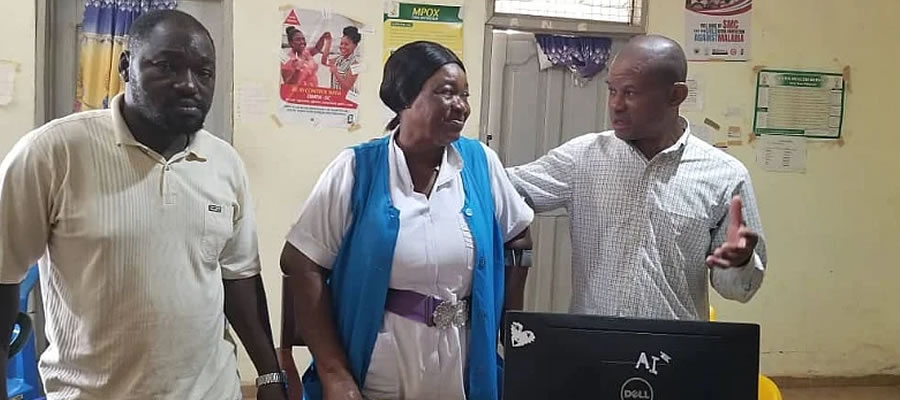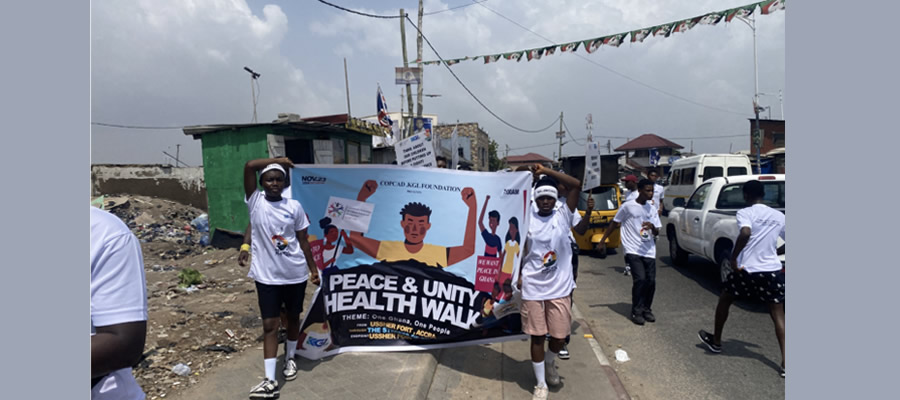

Main Sources of Water for Drinking and for Other Domestic Use
Main sources of drinking water
Table 8.10 reveals that 62.7 percent of households use water from bore-hole/pump/tube well as their main drinking water source whereas 12.3 percent and 10.1 percent drunk from pipe-bone outside dwellings and protected wells respectively, with only 0.2 percent using sachet water.
In the rural areas, a larger proportion (64.0%) of households use bore-hole/pump/tube well as their main source of drinking water, followed by pipe-bone outside dwellings12.8 percent and protected well 9.2 percent. However, in urban areas, whereas bore-hole/pump/tube well remained dominant source of drinking water used by households (55.3%), protected well is the next main source of drinking water used by 15.0 percent of households and only 9.7 percent use pipe-borne outside dwelling.
Main sources of water for other domestic use
Apart from information on main sources of drinking water for households, the 2010 PHC also gathered information on main sources of water used for other domestic activities like washing and cooking. The data collected shows that like drinking water, more than half of total households in the KNWD (57.7%) depend on bore-hole/pump/tube well as their main source of water for other domestic activities, followed by protected well 12.4 percent and pipe-borne outside dwelling constituting11.9 percent.
Bathing and Toilet Facilities
Toilet facilities
Table 8.11 presents information on the type of toilet facilities used by households in urban and rural areas of KNWD. from the table, 91.0 percent of all households in the KNWD have no toilet facilities and therefore defecate in the bush or open space. About three percent (3.3 percent) use public toilet (WC, KVIP, Pit and Pan), 3.1 percent use KVIPs situated in their dwelling units, and 1.6 percent and 0.8 percent use pit latrine and water closet (WC) respectively. Regarding the localities, the largest proportion of all rural households (93.6%) defecate in the bush, 2.5% percent use public toilet (WC, KVIP, Pit and Pan) and 2.1 percent use KVIP located in their dwelling units. In the urban areas, however, though most households (76.5%) defecate in the bush, the proportion of households with KVIP facilities in their dwelling units (8.6%) is higher than that of rural localities (2.1%).
Bathing facilities
From Table 8.11, households owning bathroom for exclusive use are in the majority constituting 42.6 percent of total households recorded in the district. The next commonly used bathing facility is open space around house (used by 22.3% of households) and private open cubicle (used by 12.7% of households) with few bathing in neighbouring houses (0.2%).
In the urban areas, 26.2 percent of households own bathroom for exclusive use, 25.3 percent use shared separate bathrooms in the same house and 19.4 percent use open space around house. In rural areas, 45.6 percent of households own bathroom for exclusive use, 22.9 percent use open space around house and 13.0 percent use private open cubicle.
The Table also shows the type of toilet facilities used by households in the district. From the table, the most common toilet facility used is Public toilet (WC, KVIP, Pit, Pan etc.) which accounts for 3.3 percent of the total household population in the district, followed by KVIP which also constitutes 3.1 percent. The least used toilet facility in the district is Bucket/Pan, constituting only 0.1 percent. It is clear from the table that majority of households in the KassenaNankana West District have no toilet facilities and this accounts for as high as 91.0 percent. Unfortunately however, all these people ease themselves in the bushes and open fields without regard for health and environmental consequences.
Method of Waste Disposal
Managing waste sustainably, being a major component of environmental sanitation has over the years in Ghana been continually a growing problem and therefore has been the bane of successive central governments and local authorities (MMDAs). A good waste management system prevents the spread of certain diseases thus ensuring environmental sanitation sustainability (MDG 7). This indicator seeks to assess the state of both solid and liquid waste disposal methods in the district.
Table 8.12 gives information on the various methods of solid and liquid waste disposal by locality type in KNWD. It is shown from the table that for solid waste, majority of households (42.7%) use public dump (open space), followed by burning (23.1%) and indiscriminate dumping (21.6%). The proportions for the urban areas are dumping in open space 42.1%, followed by burning (30.9%) and indiscriminate dumping (12.9%). For the rural localities, the proportion of households who indiscriminately dumped waste is significantly higher (23.1%) than those burning (21.7%). This means that indiscriminatedumping of solid waste by households is more prevalent in rural localities than in urban ones in the district.
Methods of liquid waste disposal in the district include throwing onto a compound, onto the street or any available space outside the house. For liquid waste, the method of disposal mostly used by households in the district is throwing onto the street/outside accounting for 58.4% of total households recorded, followed by pit (soak away) (3.5%) and through drainage system into a gutter (3.2%). In urban areas, more than half of the households (57.4%) throw their liquid waste onto the street/outside. The second most used method of liquid waste disposal in urban areas is through drainage system into a gutter (2.8%) which is significantly lower than the proportion of those who throw liquid waste onto the street The. Least used method of liquid waste disposal in the district is soak away which accounts for only 1.1 percent. Table 8.13: Method of solid and liquid waste disposal by type of locality.
From Table 8.13, it can be deduced that as at 2010, majority of households in Ghana dumped their waste in public open spaces, they accounted for 2,061,403 households. The second commonly used method of household waste disposal in the country was the use of public containers; those who used this were 1,299,654, followed by collected method which recorded 785,889 households.
In the Upper East Region, as shown in Table 8.13 and like the country situation, most households (55,459) disposed their waste in public spaces (public dump). Unlike the national scenario where the second most used method of waste disposal was public containers, the second method used by households in the region was burning which recorded 44,337 households. The computed proportions of households using the various methods of waste disposal in Ghana, Upper East Region and KNWD are shown in Figure 8.4.
Date Created : 11/21/2017 3:49:03 AM








 facebook
facebook
 twitter
twitter
 Youtube
Youtube
 +233 593 831 280
+233 593 831 280 0800 430 430
0800 430 430 GPS: GE-231-4383
GPS: GE-231-4383 info@ghanadistricts.com
info@ghanadistricts.com Box GP1044, Accra, Ghana
Box GP1044, Accra, Ghana